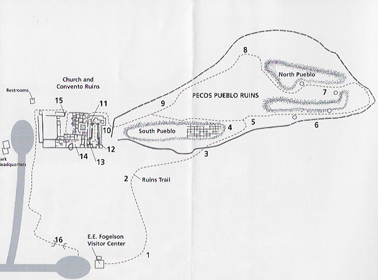
Location
Close to bridge #16 (N35D32'58.571 X W105D41'11.069)
Flowers first observed: 5/3/2017
The Plant w/Flower

The Flower

Distribution
"Southern Rocky Mountains, the Mojave and Sonoran deserts, the Four Corners area, Arizona, north California, south Oregon, south Utah and west Texas." (American Southwest)
"AZ, NM, s TX; south to n MEX" (SEINet)
Description
"Duration: Perennial Nativity: Native Lifeform: Forb/Herb General: Perennial, plants loosely to densely tufted; acaulescent to sub-caulescent, stems, if present, few to several, up to 5 cm long, the outer ones prostrate, the inner ascending, the internodes concealed by the overlapping stipules; herbage gray or white villous-tomentose with basifixed hairs; caudex sometimes developing, shortly branched; taproot woody. Leaves: Alternate, odd-pinnate, 5-17 cm long; leaflets mostly 19- 31, obovate, ovate, or suborbicular, 3-14 mm long, thick, villous-tomentose, sometimes glabrous above, margins entire; apex obtuse or notched; stipules distinct, somewhat clasping; petiole often thick, stiff, somewhat persistent. Flowers: Inflorescence an axillary raceme (sometimes sub- umbellate), mostly 5-35 flowered; peduncle shorter than to about equaling the leaves; calyx 4-12.5 mm long, minutely strigose or pilose, the teeth usually shorter than the tube; corolla quite variable in color, from bright pink-purple, pale lilac, white, to yellowish white; banner 7.5-21.5 mm long, the wings usually slightly shorter. Fruits: Legume, spreading or ascending, commonly lying on the ground, obliquely ovoid, 1.1-2.5 cm long, 6-11 mm in diameter, straight to somewhat curved, densely villous-tomentose; legumes sessile. Ecology: Found in grasslands, dry woodlands and slopes, sometimes pine forests, usually in sandy soils; 1100-2100 m (3500-7500 ft); flowers February-June. Distribution: AZ, NM, s TX; south to n MEX. Notes: A variable species, with multiple subspecies varying in flower color, pubescence, and the size of the plant depending on location and conditions. The species in general distinguished by being a perennial with no branching stems containing leaves above the ground, the leaves mostly basal or arising from stems just above the ground (i.e. acaulescent); leaves with densely shaggy, silky hairs, the hairs attached at the base (as opposed to middle); >15 leaflets which are elliptic, broad and >10 mm long; inflorescence passing leaves and >10 flwd; flws >10 mm; and 2-celled pods." (Southwest Biodiversity)
Ethnobotanical Uses
Medicine:
"Mahuna Poison Plant considered poisonous." (Moerman 114)
Astragalus mollissimus var matthewsii (Matthew's Woolly Milkvetch)
"Navajo, Ramah Ceremonial Medicine and Emetic Leaves used as a ceremonial emetic. (Moerman 114)
Internet Links